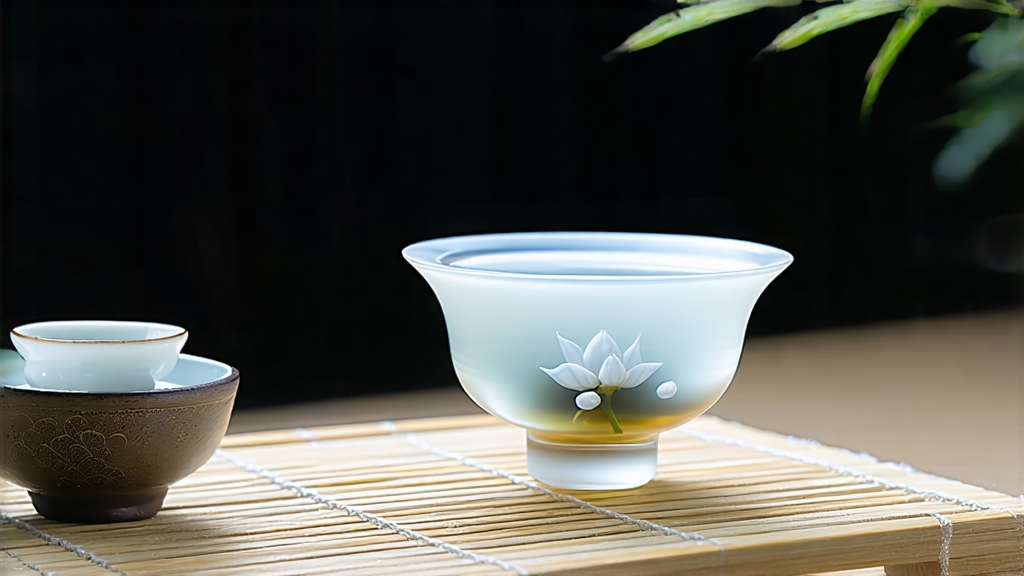
Bai Hao Yin Zhen—literally “White Hair Silver Needle”—is the quiet aristocrat of Chinese tea. While green tea commands the spotlight with its bright jade color and oolong dazzles with gymnastic infusions, Silver Needle whispers. Its charisma lies in what it refuses to do: it does not roll, bake, or ferment. It simply sleeps under the sun and moon, then wakes up in your cup tasting of dew, hay, and the faint memory of apricot blossoms.
-
A 220-year-old legend of accidental birth
The first written record appears in 1796, when a Fuding tea farmer named Wei Gao found his newly sprouted Da Bai tea bushes threatened by an early spring storm. Rather than risk bruising the tender tips during pan-firing, he spread them on a bamboo mat in an unused side room. The next morning the buds had turned a pale, pearlescent gray; when infused they gave a liquor so silken that local scholars compared it to “drinking moonlight.” Imperial taste-makers in Beijing soon demanded the novelty under the poetic name “Yin Zhen,” and by 1857 the cultivar Da Bai Hao was officially grafted throughout northern Fujian. Export began in 1891 via the Fuzhou treaty port, where European buyers christened it “Silver Tips” and paid twice the price of Keemun black. -
Micro-terroir: three villages, three personalities
Authentic Yin Zhen is produced only in Fujian province, but even within this small zone micro-climates create three stylistic sub-types.- Taimu Mountain (elevation 650–850 m): granitic soils, morning fog, slow growth. Buds are plumper, yielding a creamier body with notes of steamed rice and almond milk.
- Bailin town, Fuding basin: red sandy loam, stronger sun. Faster withering gives a lighter, more floral cup reminiscent of lily and honeydew.
- Zhenghe county, higher latitude: cooler nights, bamboo forests. Longer moon-lit withering builds amino acids, producing a savory “umami” finish that Japanese tea masters compare to gyokuro.
-
Plucking etiquette: one bud to rule them all
The picking window is brutal—three to five days in late March when the bud reaches 2.5–3 cm but has not yet unfurled into a leaf. Experienced pickers use only the thumb and middle finger in a single twisting motion; nails are forbidden because they bruise the hypodermal hairs whose silvery reflection gives the tea its name. A full kilo of finished tea requires roughly 30,000 buds, all plucked before ten o’clock when rising temperatures begin to convert starches into bitter tannins. -
Crafting without fire: the art of doing nothing
Unlike any other famous tea, Silver Needle bypasses the “kill-green” high-heat step. The process is pure choreography of air, moisture, and time.
Step 1: Wilting under the sun. Buds are laid 2 cm thick on sieves woven from wild rattan. For the first 30 minutes they are turned every five minutes to ensure even exposure; skin temperature of the bud must stay below 28 °C to prevent enzymatic browning.
Step 2: Wind tunnel. At noon, when solar radiation peaks, trays are moved into a shaded corridor where natural cross-ventilation lowers surface moisture to 45 %.
Step 3: Moonlight rest. From dusk to dawn the buds sleep outdoors, absorbing nocturnal humidity that reactivates gentle oxidation. Master crafters call this “inviting the moon to finish the tea.”
Step 4: Low-temperature bake. A final 20-minute pass at 40 °C (104 °F) reduces moisture to 5 %, halting oxidation while preserving the downy hairs. The entire cycle spans 48–60 hours, three times longer than most green teas. -
Chemical poetry: why it tastes like “liquid cashmere”
Silver Needle’s reputation for sweetness despite zero calories rests on three compounds:- Theaflavins: formed during the moon-lit oxidation, they bind to bitter catechins, rounding the edges.
- High-grade buds contain 5.8 % L-theanine, almost double